Home
Thanks to all those who have produced the photos or art work on this page. If your work is displayed without a link to your site, please send me the link and your photo can become a link.
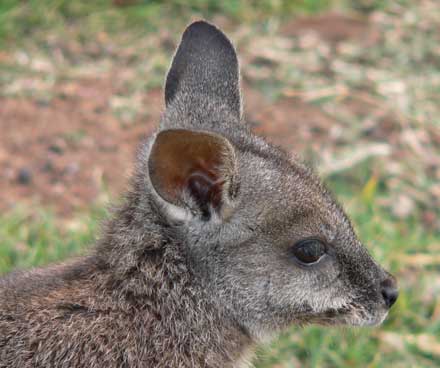
Foxes can and do easily kill Tammar wallabies
Marsupials
Home
Thanks to all those who have produced the photos or art work on this page.
If your work is displayed without a link to your site, please send me the link and your photo can become a link.

Foxes can and do easily kill Tammar wallabies
| Sensible Pets for Australia |
| Paw Printz - Caring for Native Australian Wildlife |
| Some wonderful wildlife photography by Dave Watts |
| Many rare and endangered Australian marsupials |
| - Quolls |
| - Numbats |
| - Bilbies |
| - Northern Hairy-nosed Wombats |
| - Sugar Gliders |
| - Leadbeaters Possums |
| - Bridle Nail-Tailed Wallaby |
| General Sites |
| - General Marsupial Links |
| - Western Australian Mammal Species |
| - More informative sites on endangered animals |
Leadbeater's Possum (Gymnobelideus leadbeateri).
The Leadbeater�s possums are Victoria�s State Animal and they live in Victoria�s tall Mountain ash,
Alpine ash and Shining gum forests.
In earlier days the Leadbeater�s possums may have been widespread but these days they appear to
be restricted to a small area of Victoria�s central highlands.
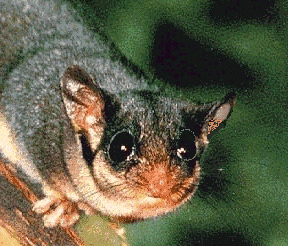 |
| Australian Fauna |
Leadbeater�s possums are in trouble
Leadbeater�s possums cannot live in new growth forest because those trees have not yet developed the
hollows that these possums need to survive
So, after an Old Growth Mountain Ash forest has been logged, Leadbeater�s possums may not be able
to return for up to a 100 years.
Also, the Leadbeater�s possums are only able to return to a new growth forest if there are any of these
animals left in an old forest which is very close by.
Leadbeater�s possums seldom if ever, travel far from a tree and they never travel overland.
If there is no old growth forest close to a re-growth area then even after a hundred years, the new forest
is not likely to ever see a Leadbeater�s possum.
There are still some people that will tell you that we don�t need old forest because re-growth areas are
juicier for the animals to eat; they call this nonsense 'new sun re-growth'.
There are also some idiots that say that if we don�t chop down all the old forests, they will die;
isn�t it strange that they have lasted this long just waiting for us to chop them down to save them.
The problem with many �new sun re-growth areas� is that the Leadbeater�s possums have already died out
because any that survived the logging were left out in the cold and froze to death during the winter;
they could not wait a hundred years for a new house (a hollow to call home).
In 2003 the remaining population of Leadbeater�s possums was estimated to be about 500 animals.
The early decline of these animals was because of very heavy logging and bushfires.
In modern times the new forestry practice of clear felling for woodchips has been a disaster for most fauna.
We nearly lost the Leadbeater�s possum because nobody ever cared about protecting broad contiguous corridors of
old forest for them to move between different areas; which would have also maintained broadly based gene pools
of them and other creatures as well.
Now the gene pool for the survival of the Leadbeater�s possum is very narrow which is not good for their
survival in the long term.
An example of a dangerously narrow gene pool is that of the Cheetah and Amur Leopard
which is genetically in big trouble.
And, genetic engineering will not help the cheetah because the gene pool that exists is all there is.
The only way to secure the survival of the cheetah is to have as many isolated populations as possible.
If that can be maintained for another hundred thousand to a million years or so then the gene pool
may slowly start to broaden again; though they will never regain their former glory.
Modern humans were not responsible for the genetic plight of the cheetah; though we can help to
secure their survival.
Clear felling for woodchips did not get going properly until the 1970s, but now the practice is ferocious and
relentless; and of course bushfires have taken their toll as well; i believe that
foxes and cats are responsible for many of the great bushfires in Australia.
If you are concerned about the Leadbeater�s possums ask the Premier of Victoria and your Prime Minister what
they are doing to stop the clear felling of what is left of our old growth forests.
About writing letters to politicians: -
Only ever write very short letters to politicians because they are usually very busy people; 30 to 50 words is plenty.
Only write about one issue at a time and be polite but firm.
If you get a �nonsense answer� you should reply immediately and remind them that you are intelligent and
want a sensible answer because you and your friends want to know who is worth voting for.
Your Politician�s addresses here
Quolls � The Dasyurids.
It looks like the cane toad will wipe out the Northern Quoll on the mainland
� see Sensible Pets for Australia
and The Cane Toad.
Quolls � General Dasyurids.
| Eastern Quoll � Department of Primary Industries Tasmania |
| Eastern Quoll - Tas Govt. |
| Tasmanian Adventures Wildlife |
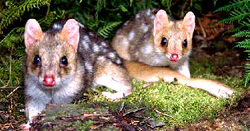 |
| Western Quoll |
| Western Quoll � NSW Government |
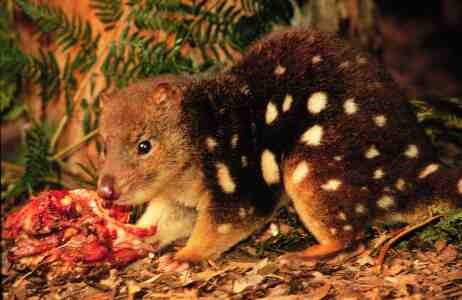 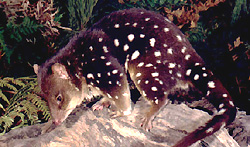 |
| Spotted Tailed Quoll |
| Spotted Tailed Quoll � Tas Govt. |
| Dasyurus maculatus - Spotted Tailed Quoll, Tiger Quoll, Tiger Cat |
| Spot Tailed Quoll |
| Parks and Wildlife Tasmania |
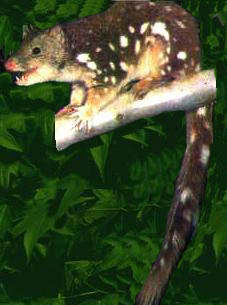 |
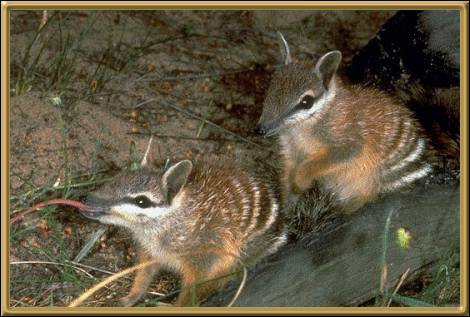
|
| Milamba's Numbat |
| Perth Zoo |
| Australian Endangered Species Profile Sheet |
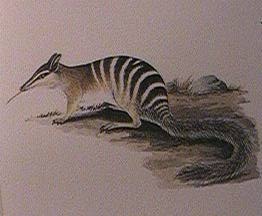 |
Bilbies.
Bilbies are members of the ground-dwelling marsupials called bandicoots.
The bilby is the largest bandicoot.
Northern Hairy-nosed Wombats.
There are 3 types of Wombats.
The Common Wombat and 2 types of Hairy-nosed Wombats
The Northern Hairy-nosed is perhaps the rarest large burrowing mammal in the world.
There are approximately 100 left and in their case cattle are a problem as they are hemmed in by the moo cows.
The Common Wombat (Vombatus ursinus).
Plains or Western Hairy-nosed Wombat (Lasiorhinus latifrons).
| Plains Wombat found in NSW |
Sugar Gliders.
Pussy cats love to eat Sugar Gliders!
Without old trees with hollows, Sugar Gliders cannot live.
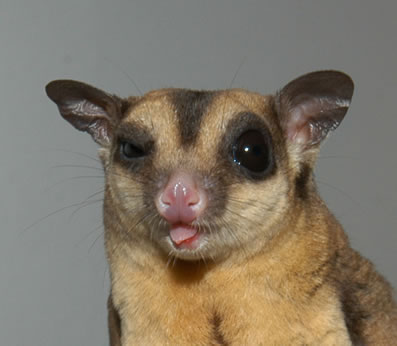
|
| Larry's Ultimate Sugar Glider Index |
| Department of Primary Industries, Water & Environment |
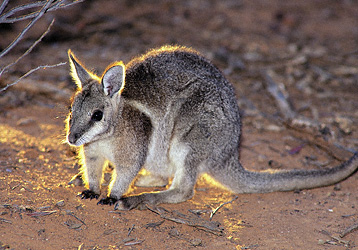
|
| Animal Info - Bridled Nail-tailed Wallaby |
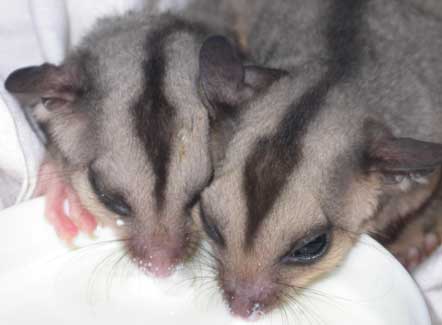
Squirrel Glider (Petaurus norfolcensis) |
| Marsupials |
| Touring Australia - Marsupials |
| Metatheria |
| The Natural History of Marsupials |
| Kangaroo Biology |
| Kangaroos and Wallabies |
Western Australian Mammal Species.
The following 10 sites are a great overview of the mammals that can be found in West Australia, many of these creatures can also be found in other states.
More informative sites on endangered animals.
| AN ENDANGERED SPECIES SITE - This site has many useful links. |
| THE CITES PHOTO GALLERY. |